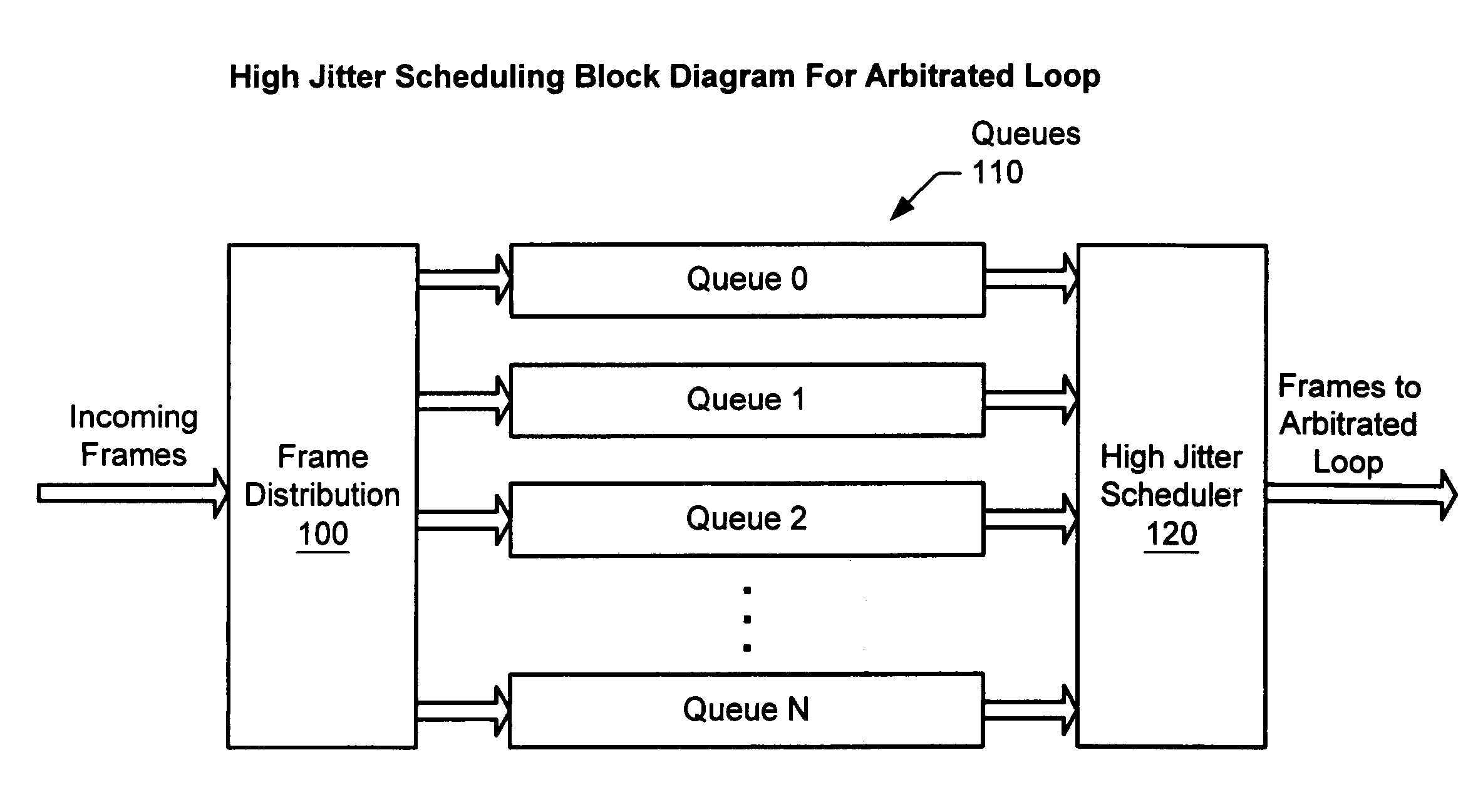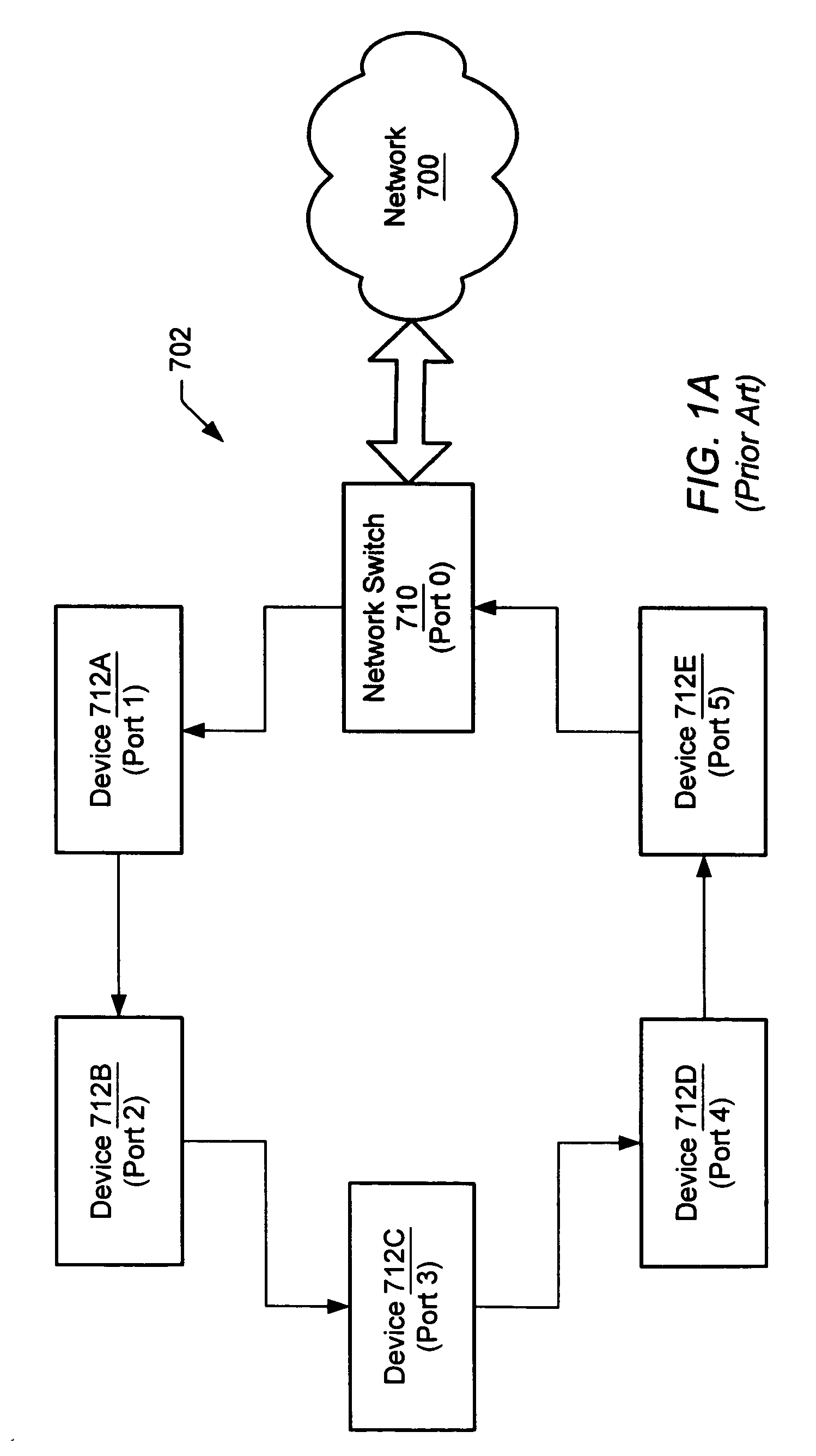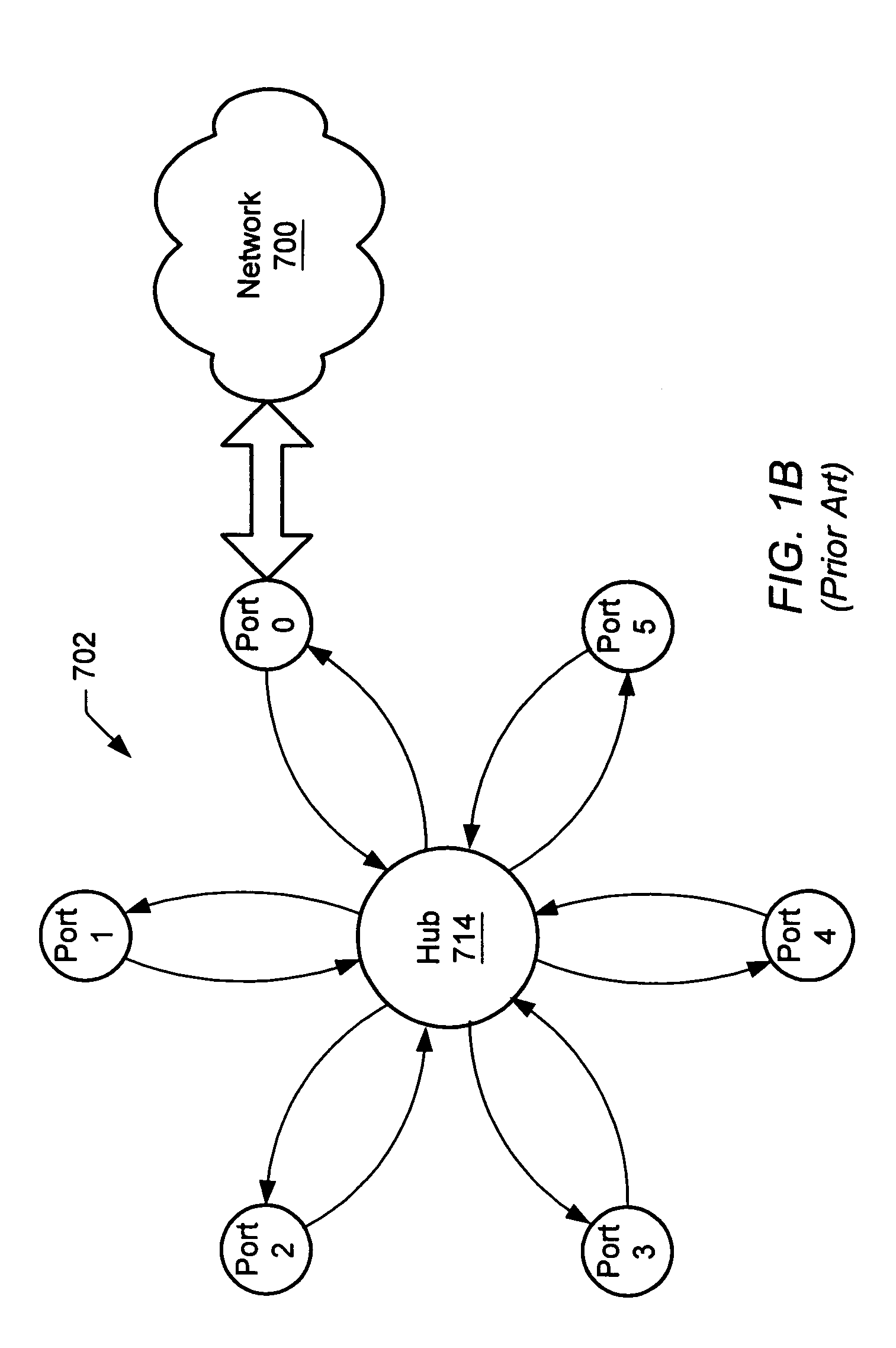Method and apparatus for scheduling packet flow on a fibre channel arbitrated loop
a technology of arbitrated loop and packet flow, applied in the field of network switches, can solve the problems of device arbitration, high jitter, and high sensitivity of access to storage systems, and achieve the effects of improving performance, affecting performance, and high jitter
- Summary
- Abstract
- Description
- Claims
- Application Information
AI Technical Summary
Benefits of technology
Problems solved by technology
Method used
Image
Examples
Embodiment Construction
[0096]The United States Patent Application titled “METHOD AND APPARATUS FOR TRANSFERRING DATA BETWEEN IP NETWORK DEVICES AND SCSI AND FIBRE CHANNEL DEVICES OVER AN IP NETWORK” by Latif, et al., filed on Feb. 8, 2000 (Ser. No. 09 / 500,119), is hereby incorporated by reference in its entirety. This application describes a network switch that implements a protocol referred to herein as Storage over Internet Protocol (SoIP), and that allows efficient communication between the SCSI (Small Computer System Interface), Fibre Channel and Ethernet (e.g. Gigabit Ethernet) protocols. In general, a majority of storage devices currently use “parallel” SCSI or Fibre Channel data transfer protocols, whereas most LANs use an Ethernet protocol, such as Gigabit Ethernet. SCSI, Fibre Channel and Ethernet each use a different individual format for data transfer. For example, SCSI commands were designed to be implemented over a parallel bus architecture and therefore are not packetized. Fibre Channel, lik...
PUM
 Login to View More
Login to View More Abstract
Description
Claims
Application Information
 Login to View More
Login to View More - R&D
- Intellectual Property
- Life Sciences
- Materials
- Tech Scout
- Unparalleled Data Quality
- Higher Quality Content
- 60% Fewer Hallucinations
Browse by: Latest US Patents, China's latest patents, Technical Efficacy Thesaurus, Application Domain, Technology Topic, Popular Technical Reports.
© 2025 PatSnap. All rights reserved.Legal|Privacy policy|Modern Slavery Act Transparency Statement|Sitemap|About US| Contact US: help@patsnap.com



